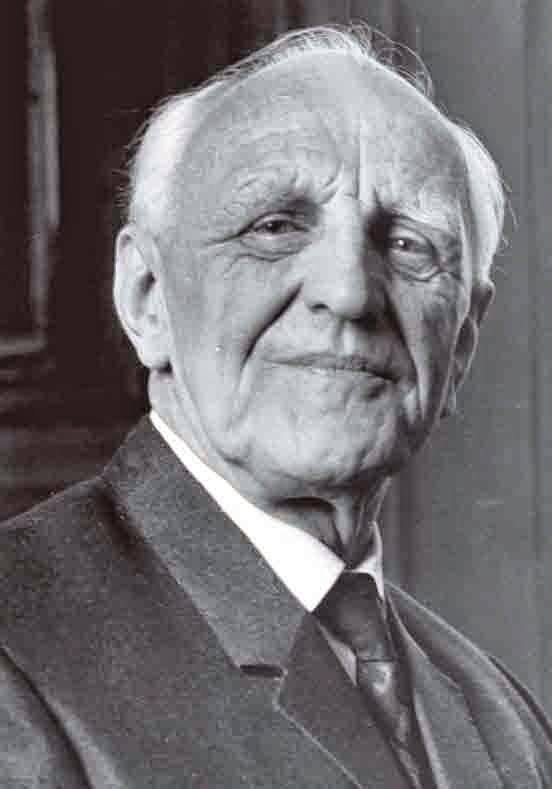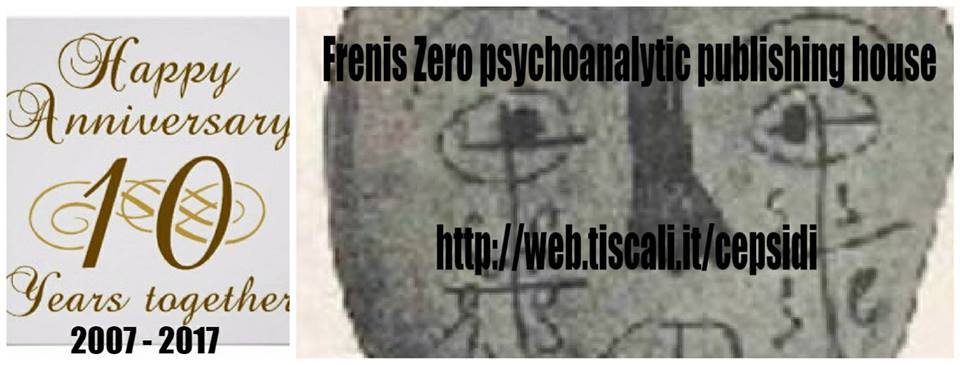| A.S.S.E.Psi. web
site (History of Psychiatry and Psychoanalytic Psychotherapy )
A.S.S.E.Psi.NEWS (to
subscribe our monthly newsletter)
Ce.Psi.Di. (Centro
di Psicoterapia Dinamica "Mauro Mancia")
Maitres à dispenser
(Our reviews about psychoanalytic congresses)
Biblio Reviews
(Recensioni)
Congressi ECM (in italian)
Events (our
congresses)
Tatiana Rosenthal and
... other 'psycho-suiciders'
Thalassa. Portolano
of Psychoanalysis
PsychoWitz
- Psychoanalysis and Humor (...per ridere un po'!)
Giuseppe Leo's Art Gallery
Spazio
Rosenthal (femininity and psychoanalysis)
Psicoanalisi Europea Video Channel
A.S.S.E.Psi. Video Channel
Ultima uscita/New issue:
"Why War in
Ukraine and in Europe? Psychoanalysis, Trauma, and Resiliency" (English
Edition)
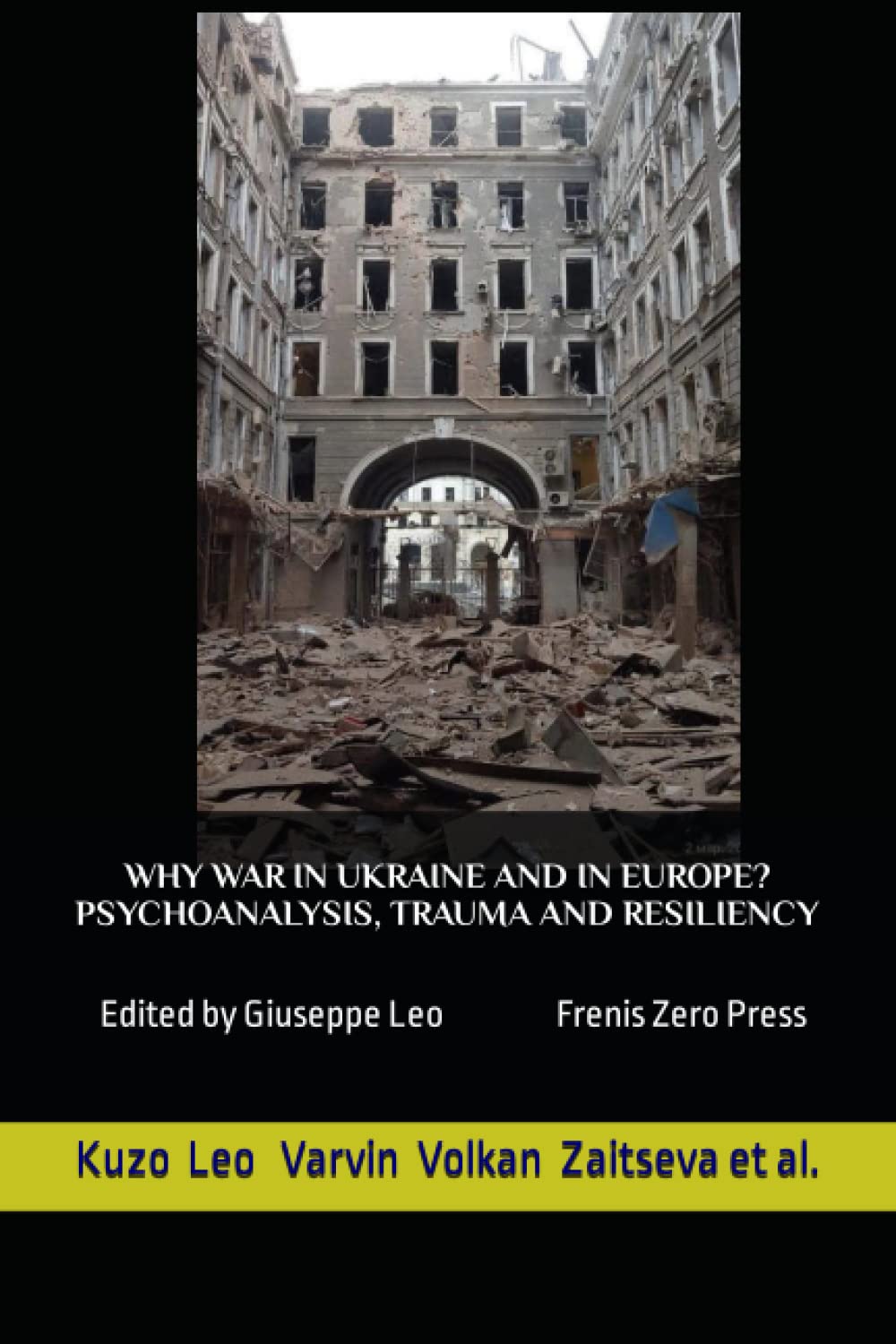
Edited by Giuseppe Leo
Writings by: V. Blikhar N.
Kalka
H. Katolyk L. Kuzo G. Leo
A. Marchuk
M. Tsyvinska S. Varvin
V. D. Volkan K. Zaitseva
Publisher:
Frenis Zero
Collection: Mediterranean Id-entities
Year: 2023
Pages: 235
ISBN: 978-88-97479-42-0
Click
here to buy the book/Compra su Amazon

"Neuroscience
and Psychoanalysis" (3rd English Edition)
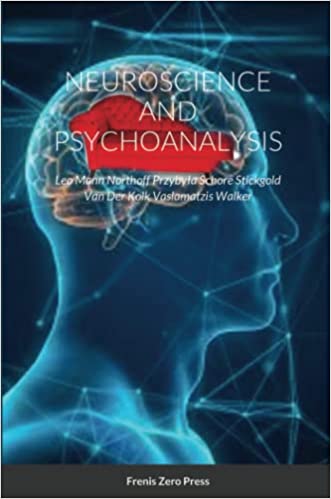
Edited by Giuseppe Leo
Writings by: D.
Mann
G.Northoff
J. Przybyła A. N.
Schore
R. Stickgold B.A. Van Der
Kolk G.
Vaslamatzis M.P. Walker
Publisher:
Frenis Zero
Collection: Psychoanalysis and Neuroscience
Year: 2023
Pages: 321
ISBN: 978-88-97479-40-6
Click
here to buy the book/Compra su Amazon

"Infant
research e psicoanalisi" (ediz. italiana)
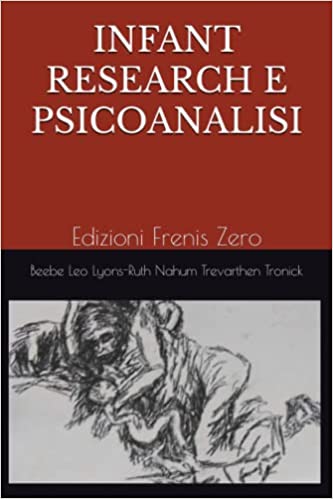
A cura di: Giuseppe Leo
Scritti di: B.
Beebe K.
Lyons-Ruth J. P.
Nahum D. Schechter E. Solheim
C. Trevarthen E. Z.
Tronick
L. Vulliez-Coady
Editore: Frenis Zero
Collana: Confini della psicoanalisi
Year: 2022
Pages: 276
ISBN: 978-88-97479-38-3
Click
here to buy the book/Compra su Amazon

"Crisi ecologica e pandemia. Una sfida per la
psicoanalisi"
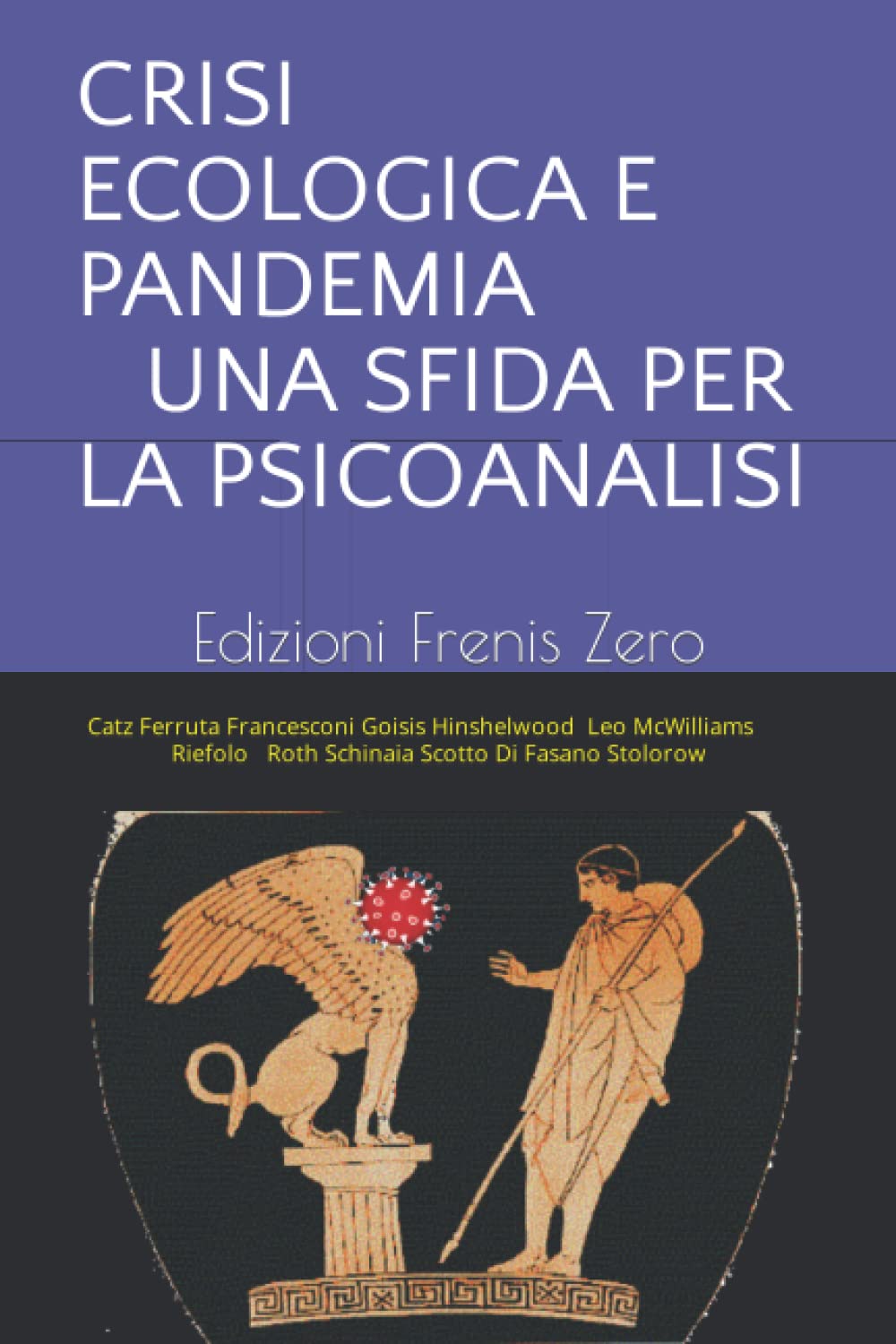
A cura di Giuseppe Leo
Scritti di: Hilda
Catz, Anna Ferruta, Marco Francesconi, Pietro R. Goisis, Robert
Hinshelwood Giuseppe Leo, Nancy McWilliams, Giuseppe Riefolo, Merav
Roth, Cosimo Schinaia, Daniela Scotto Di Fasano, Robert D. Stolorow
Editore: Frenis Zero
Collana: Confini della Psicoanalisi
Anno: 2022
Pages: 268
ISBN: 978-88-97479-36-9
Click
here to buy the book/Compra su Amazon

"Enactment in
Psicoanalisi"
(Edizione Italiana)
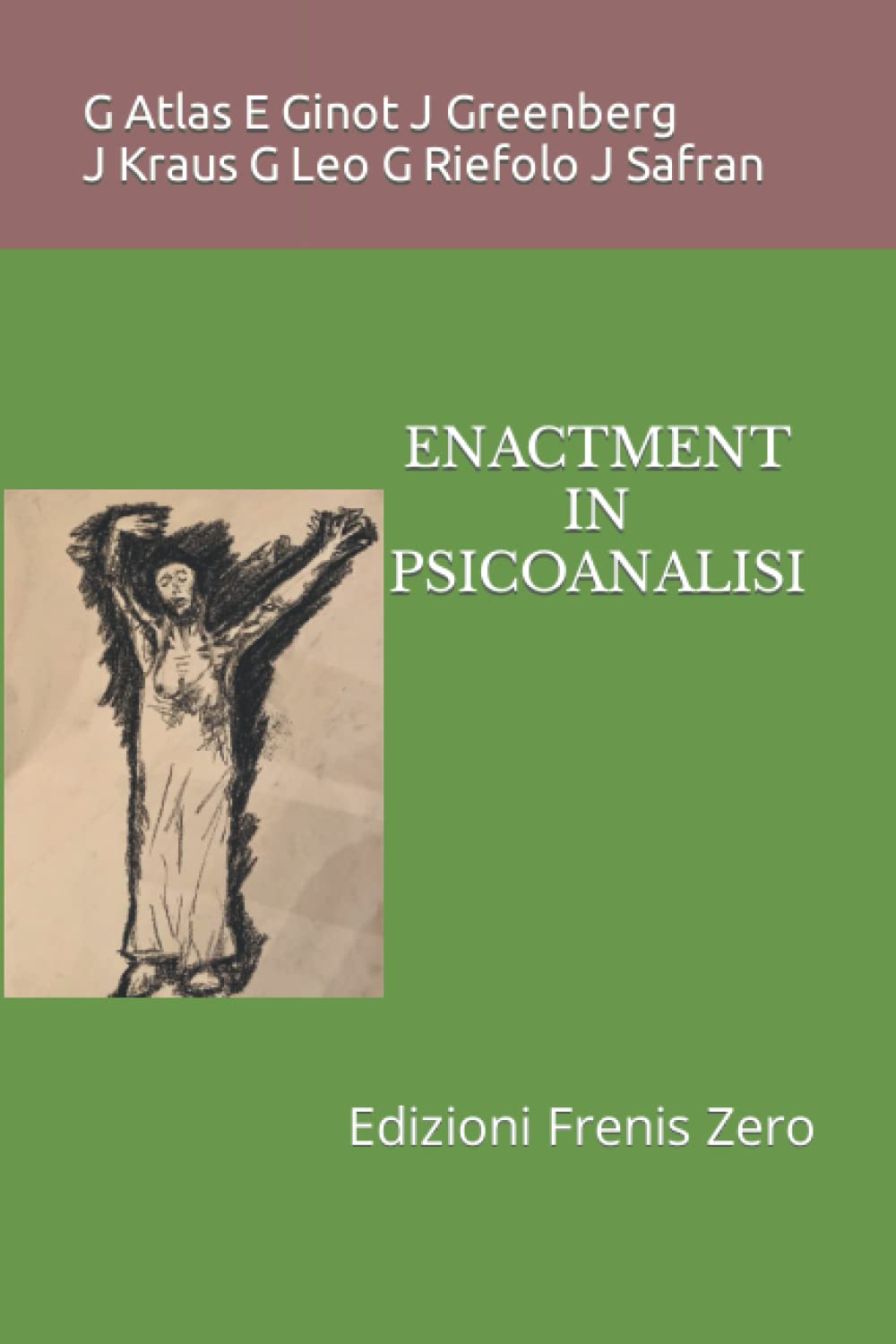
A cura di Giuseppe Leo &
Giuseppe Riefolo
Scritti di: Galit Atlas Efrat
Ginot
Jay Greenberg Jessica
Kraus Giuseppe
Leo Giuseppe
Riefolo Jeremy Safran
Editore: Frenis Zero
Collana: Confini della Psicoanalisi
Anno: 2022
Pages: 320
ISBN: 978-88-97479-34-5
Click
here to buy the book/Compra su Amazon

"Blown Lives. A Tale
for Spielrein, Gross, Tausk and the other losers of
psychoanalysis" by Giuseppe Leo
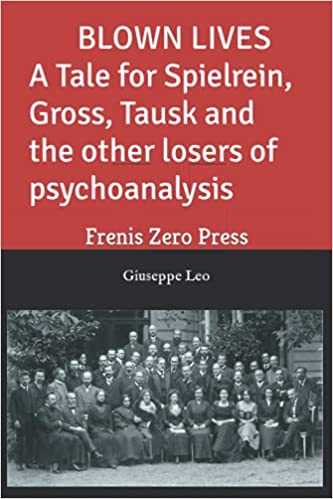
Editore/Publisher: Edizioni Frenis
Zero
ISBN: 978-88-97479-32-1
Anno/Year: 2021
Pages: 284
Click here to buy the
book/Compra su Amazon

"My Ideas Felt Like
Outsize Clothes. A tale for Etty Hillesum" (Second Edition)
by Giuseppe Leo
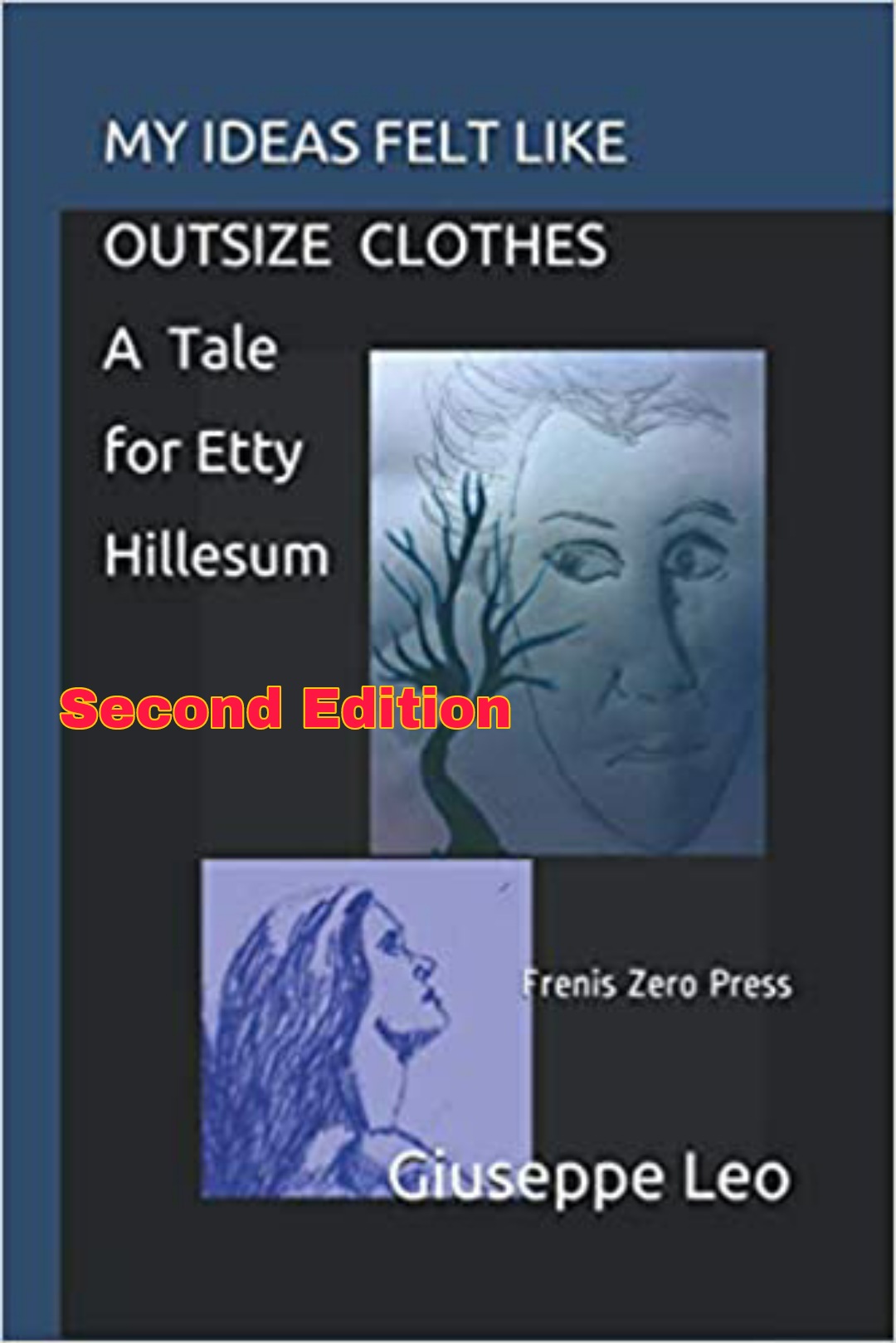
Editore/Publisher: Edizioni Frenis
Zero
ISBN: 978-88-97479-28-4
Anno/Year: 2021
Pages: 128
Click here to buy the
book/Compra su Amazon

"Infant
Research and Psychoanalysis" (Third Edition) edited by
Giuseppe Leo
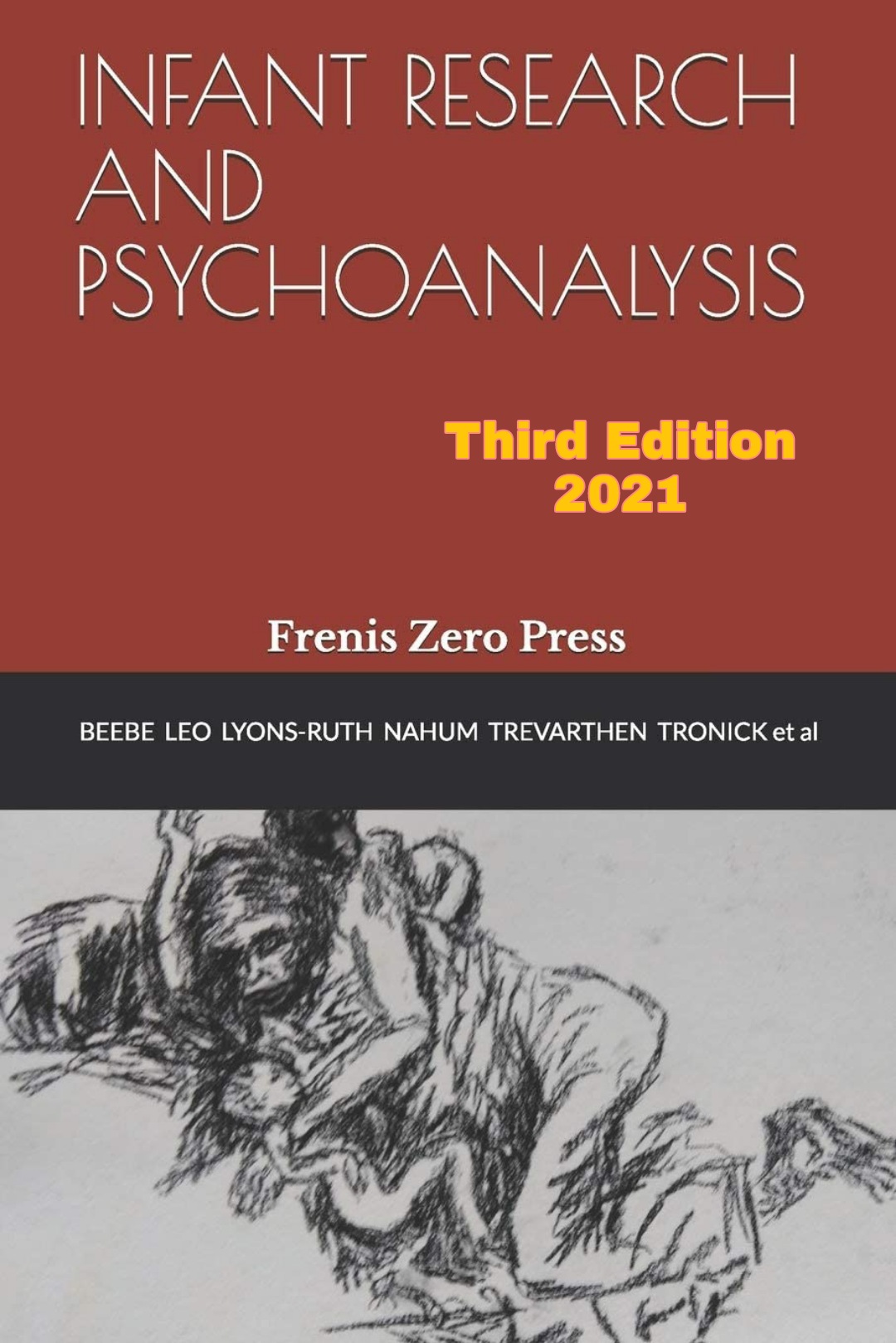
"
Edited by Giuseppe Leo
Writings by: B.
Beebe K. Lyons-Ruth J. P. Nahum D.
Schechter E. Solheim C.
Trevarthen E. Z.
Tronick
L. Vulliez-Coady
Publisher: Frenis Zero
Collection: Borders of Psychoanalysis
Year: 2021
Pages: 285
ISBN: 978-88-97479-24-6
Click
here to buy the book/Compra su Amazon

"Psychanalyse,
Lieux de Mémoire et Traumatismes Collectifs" (Third Edition) edited
by Giuseppe Leo
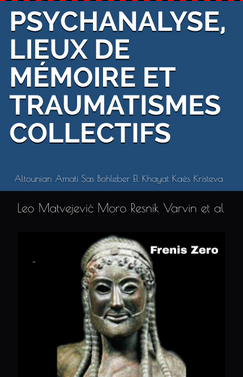
Writings by: J.
Altounian, S. Amati Sas, W. Bohleber, M. El Husseini, R. El Khayat, Y.
Gampel R. Kaës, J. Kristeva, G. Leo, A. Loncan, P. Matvejević, M.-R.
Moro, S. Resnik, S. Varvin
Editore/Publisher: Edizioni Frenis
Zero
ISBN: 978-88-97479-22-2
Anno/Year: 2021
Pages: 546
Click
here to buy the book/Compra su Amazon

"Enactment
in Psychoanalysis" - Second Edition) edited by Giuseppe Leo
& Giuseppe Riefolo
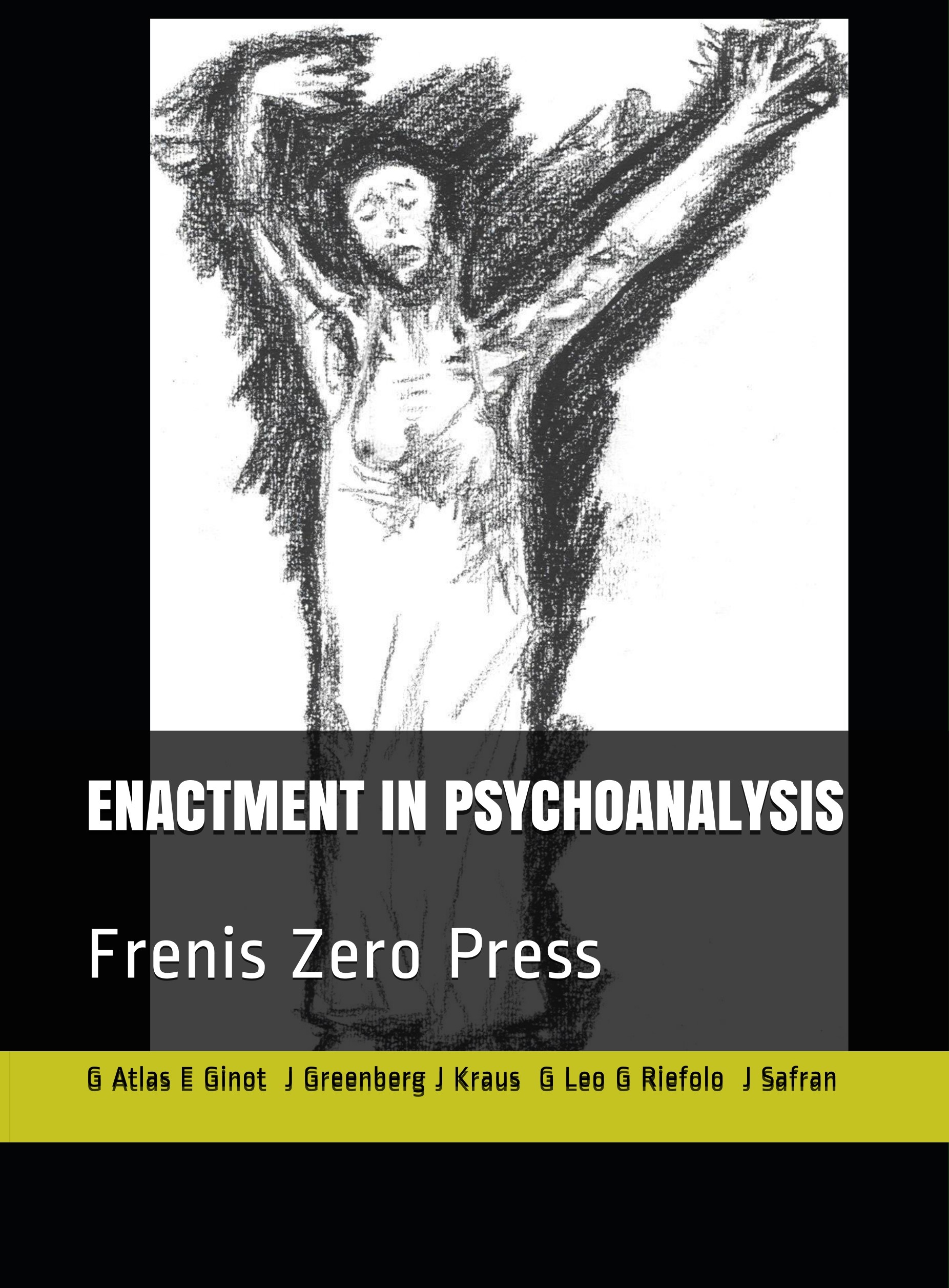
Edited by Giuseppe Leo &
Giuseppe Riefolo
Writings by: G. Atlas
E. Ginot J.R. Greenberg J.
Kraus J.D. Safran
Publisher: Frenis Zero
Collection: Borders of Psychoanalysis
Year: 2020
Pages: 333
ISBN: 978-88-97479-19-2
Click
here to buy the book/Compra su Amazon

"My Ideas Felt Like
Outsize Clothes. A tale for Etty Hillesum" by Giuseppe Leo
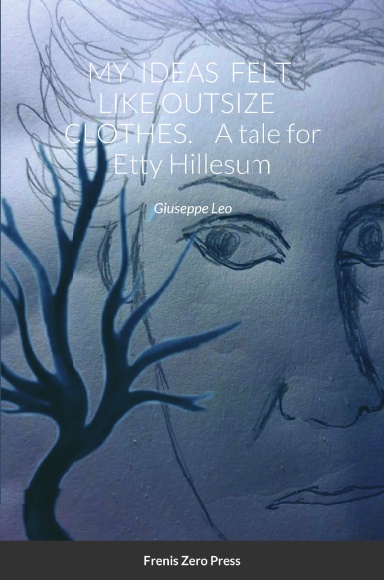
Editore/Publisher: Edizioni Frenis
Zero
ISBN: 978-88-97479-33-8
Anno/Year: 2020
Pages: 122
Click
here to order the book/Ordina
su Lulu

"Environmental
Crisis and Pandemic. A Challenge for Psychoanalysis" edited
by Giuseppe Leo (Second Edition)
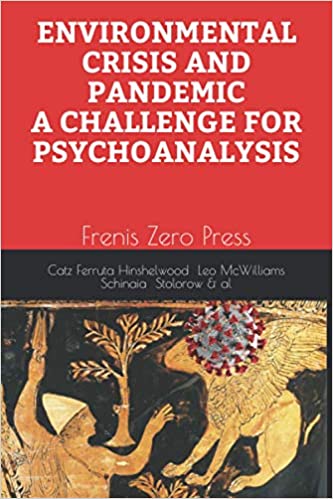
Writings by: H.
Catz, A.
Ferruta,
M. Francesconi, P. R. Goisis, R. D. Hinshelwood, G. Leo, N.
McWilliams, G. Riefolo, M.
Roth, C. Schinaia, D. Scotto
Di Fasano, R. D. Stolorow
Editore/Publisher: Edizioni Frenis
Zero
ISBN: 978-88-97479-37-6
Anno/Year: 2020
Pages: 312
Click
here to order the book/Ordina
su Lulu

Click
here to buy the book/Compra su Amazon

"Psychanalyse,
Lieux de Mémoire et Traumatismes Collectifs" sous la direction
de Giuseppe Leo
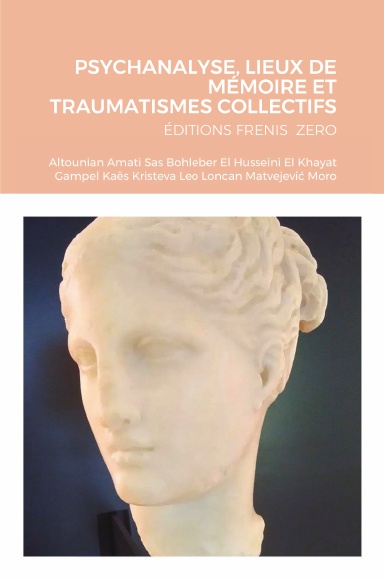
Writings by: J.
Altounian, S. Amati Sas, W. Bohleber, M. El Husseini, R. El Khayat, Y.
Gampel R. Kaës, J. Kristeva, G. Leo, A. Loncan, P. Matvejević, M.-R.
Moro
Editore/Publisher: Edizioni Frenis
Zero
ISBN: 978-88-97479-29-1
Anno/Year: 2020
Pages: 482
Click
here to order the book/Ordina
su Lulu

"Fear
of Lockdown. Psychoanalysis, Pandemic Discontents and Climate
Change" edited by Giuseppe
Leo
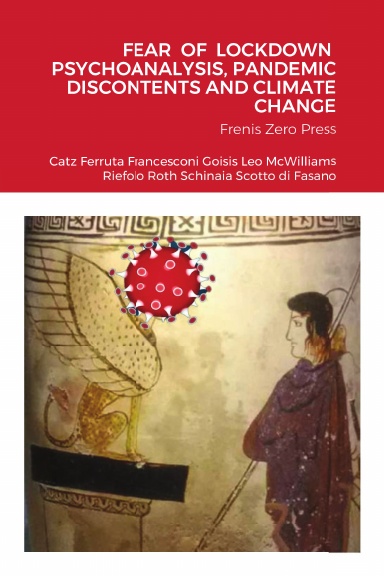
Writings by: H.
Catz, A.
Ferruta,
M. Francesconi, P. R. Goisis, G.
Leo, N. McWilliams, G.
Riefolo, M. Roth, C.
Schinaia, D. Scotto Di Fasano
Editore/Publisher: Edizioni Frenis
Zero
ISBN: 978-88-97479-21-5
Anno/Year: 2020
Pages: 295
Click
here to order the book/Ordina
su Lulu

Click
here to buy the book/Compra su Amazon

"Rock Music & Psychoanalysis"
Second Edition
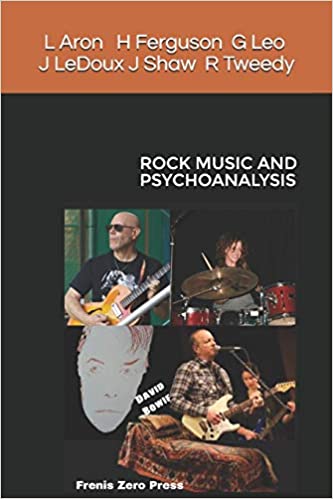
Edited
by: Giuseppe Leo
Authored
by/autori: Lewis
Aron Heather
Ferguson Joseph LeDoux Giuseppe Leo John
Shaw Rod Tweedy
Editore/Publisher: Edizioni Frenis Zero
Collection/Collana: Borders
of Psychoanalysis
Anno/Year: 2020
Pagine/Pages: 221
ISBN:978-88-97479-35-2
Click
here to buy the book/Compra su Amazon

"Essere nella cura"
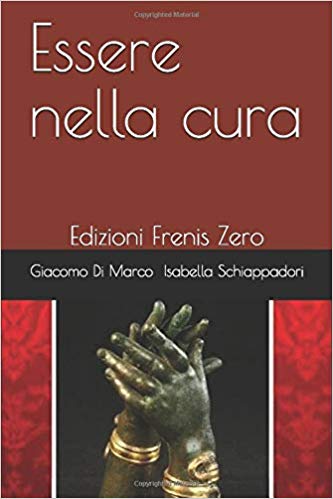
Authored
by/autori: Giacomo
Di Marco & Isabella
Schiappadori
Editore/Publisher: Edizioni Frenis Zero
Collection/Collana: Confini
della Psicoanalisi
Anno/Year: 2019
Pagine/Pages: 210
ISBN:978-88-97479-17-8
Click
here to order the book
"Enactment
in Psychoanalysis"
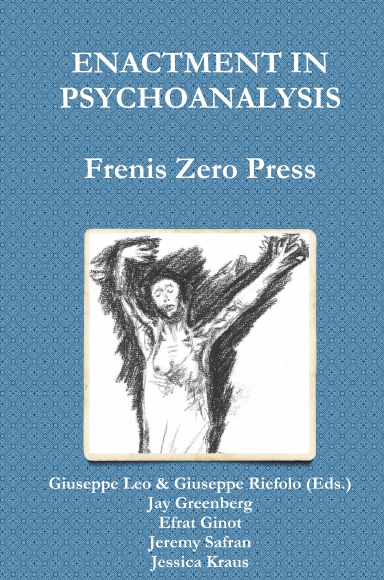
Edited by Giuseppe Leo &
Giuseppe Riefolo
Writings by: E.
Ginot J.R. Greenberg J. Kraus J.D. Safran
Publisher: Frenis Zero
Collection: Borders of Psychoanalysis
Year: 2019
Pages: 326
ISBN: 978-88-97479-15-4
Click
here to order the book
"Infant Research and Psychoanalysis"

Edited by Giuseppe Leo
Writings by: B.
Beebe K. Lyons-Ruth J. P. Nahum E. Solheim C.
Trevarthen E. Z. Tronick L.
Vulliez-Coady
Publisher: Frenis Zero
Collection: Borders of Psychoanalysis
Year: 2018
Pages: 273
ISBN: 978-88-97479-14-7
Click
here to order the book
"Fundamentalism
and Psychoanalysis"
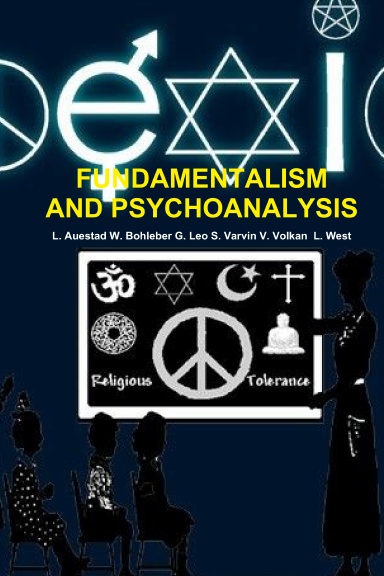
Edited by Giuseppe Leo
Prefaced by: Vamik D. Volkan
Writings by: L.
Auestad W. Bohleber S. Varvin
L. West
Publisher: Frenis Zero
Collection: Mediterranean Id-entities
Year: 2017
Pages: 214
ISBN: 978-88-97479-13-0
Click
here to order the book
"Psicoanalisi,
luoghi della resilienza ed immigrazione"
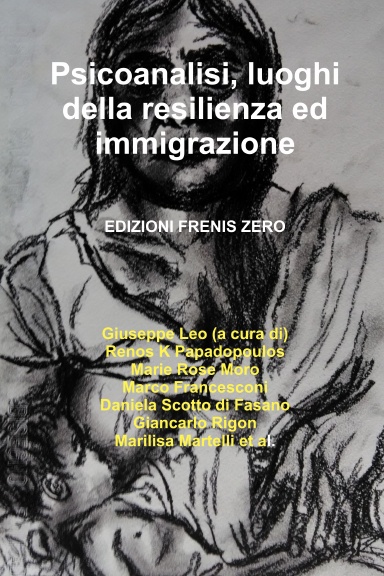
Edited
by/a cura di: Giuseppe Leo
Writings by/scritti
di:
S. Araùjo Cabral, L.
Curone,
M. Francesconi,
L.
Frattini,
S. Impagliazzo, D. Centenaro Levandowski, G. Magnani, M. Manetti, C.
Marangio, G.
A. Marra e Rosa, M.
Martelli,
M. R. Moro, R. K. Papadopoulos,
A. Pellicciari,
G. Rigon,
D. Scotto di Fasano, E. Zini, A. Zunino
Editore/Publisher: Edizioni Frenis Zero
Collection/Collana: Mediterranean
Id-entities
Anno/Year: 2017
Pagine/Pages: 372
ISBN:978-88-97479-11-6
Click
here to order the book
"Psicoanalisi
in Terra Santa"
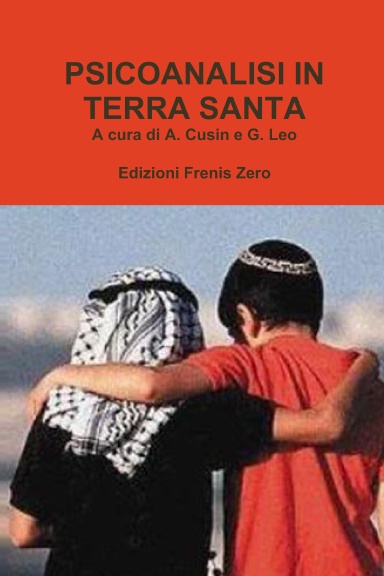
Edited
by/a cura di: Ambra Cusin & Giuseppe Leo
Prefaced by/prefazione
di:
Anna Sabatini Scalmati
Writings by/scritti
di:
H. Abramovitch A. Cusin M.
Dwairy A. Lotem M.
Mansur M. P. Salatiello Afterword
by/ Postfazione
di:
Ch. U.
Schminck-Gustavus
Notes by/ Note di: Nader Akkad
Editore/Publisher: Edizioni Frenis Zero
Collection/Collana: Mediterranean
Id-entities
Anno/Year: 2017
Pagine/Pages: 170
ISBN:978-88-97479-12-3
Click
here to buy the book
"Essere
bambini a Gaza. Il trauma infinito"

Authored
by/autore: Maria
Patrizia
Salatiello
Editore/Publisher: Edizioni Frenis Zero
Collection/Collana: Mediterranean
Id-entities
Anno/Year: 2016
Pagine/Pages: 242
ISBN:978-88-97479-08-6
Click
here to buy the book
Psychoanalysis,
Collective Traumas and Memory Places (English Edition)
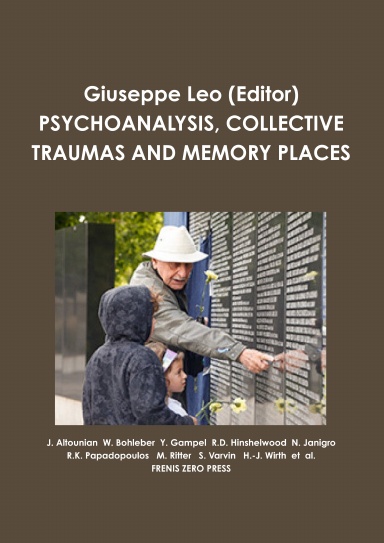
Edited
by/a cura di: Giuseppe Leo Prefaced by/prefazione
di:
R.D.Hinshelwood
Writings by/scritti di: J.
Altounian W.
Bohleber J.
Deutsch
H. Halberstadt-Freud Y.
Gampel
N. Janigro R.K.
Papadopoulos
M. Ritter S. Varvin H.-J. Wirth
Editore/Publisher: Edizioni Frenis Zero
Collection/Collana: Mediterranean
Id-entities
Anno/Year: 2015
Pagine/Pages: 330
ISBN:978-88-97479-09-3
Click
here to buy the book
"L'uomo dietro al lettino" di Gabriele Cassullodi Gabriele Cassullodi Gabriele Cassullo
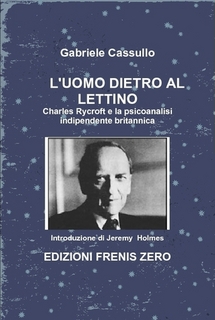
Prefaced by/prefazione di: Jeremy
Holmes
Editore/Publisher: Edizioni Frenis Zero
Collection/Collana: Biografie
dell'Inconscio
Anno/Year: 2015
Pagine/Pages: 350
ISBN:978-88-97479-07-9
Click here to order the book
"Neuroscience
and Psychoanalysis" (English Edition)

Edited by/a cura di: Giuseppe Leo
Prefaced by/prefazione di:
Georg Northoff
Writings by/scritti di: D.
Mann A. N. Schore R.
Stickgold
B.A. Van Der
Kolk
G. Vaslamatzis M.P. Walker
Editore/Publisher:
Edizioni Frenis Zero
Collection/Collana: Psicoanalisi e
neuroscienze
Anno/Year: 2014
Pagine/Pages: 300
ISBN:978-88-97479-06-2
Click
here to order the book
Vera
Schmidt, "Scritti su psicoanalisi infantile ed educazione"

Edited by/a cura di: Giuseppe
Leo
Prefaced by/prefazione di:
Alberto
Angelini
Introduced by/introduzione di:
Vlasta
Polojaz
Afterword by/post-fazione di: Rita
Corsa
Editore/Publisher: Edizioni Frenis
Zero
Collana: Biografie dell'Inconscio
Anno/Year: 2014
Pagine/Pages: 248
ISBN:978-88-97479-05-5
Click
here to order the book
Resnik,
S. et al. (a cura di Monica Ferri), "L'ascolto dei sensi e dei
luoghi nella relazione terapeutica"
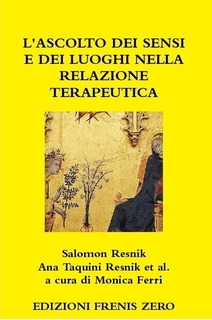
Writings by:A.
Ambrosini, A. Bimbi, M.
Ferri,
G. Gabbriellini, A. Luperini, S.
Resnik,
S. Rodighiero, R. Tancredi, A. Taquini
Resnik, G. Trippi
Editore/Publisher: Edizioni Frenis
Zero
Collana: Confini della Psicoanalisi
Anno/Year: 2013
Pagine/Pages: 156
ISBN:978-88-97479-04-8
Click
here to order the book
Silvio
G. Cusin, "Sessualità e conoscenza"
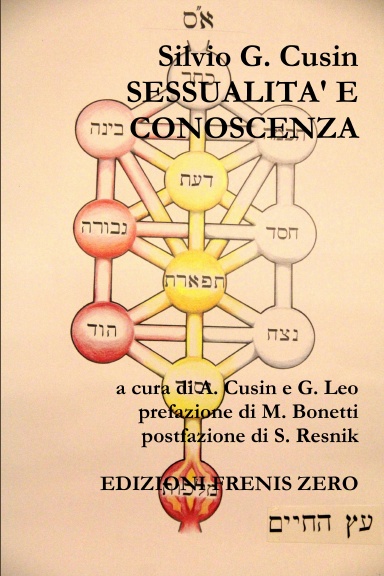
A cura di/Edited by: A. Cusin
& G. Leo
Editore/Publisher: Edizioni Frenis
Zero
Collana/Collection: Biografie
dell'Inconscio
Anno/Year: 2013
Pagine/Pages: 476
ISBN: 978-88-97479-03-1
Click
here to order the book
AA.VV.,
"Psicoanalisi e luoghi della riabilitazione", a cura di G. Leo e G.
Riefolo (Editors)
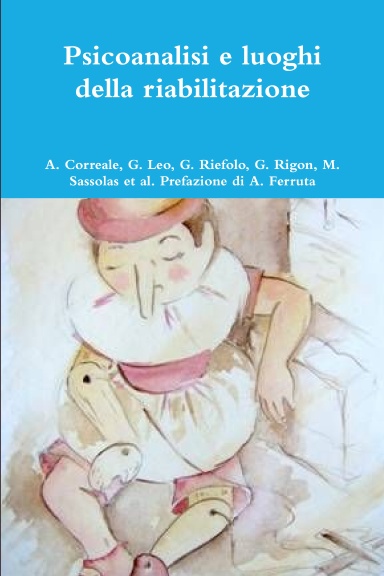
A cura di/Edited by: G. Leo
& G. Riefolo
Editore/Publisher: Edizioni Frenis
Zero
Collana/Collection: Id-entità
mediterranee
Anno/Year: 2013
Pagine/Pages: 426
ISBN: 978-88-903710-9-7
Prezzo/Price:
€ 39,00
Click
here to order the book
AA.VV.,
"Scrittura e memoria", a cura di R. Bolletti (Editor)

Writings by: J. Altounian, S. Amati Sas, A. Arslan,
R. Bolletti, P. De Silvestris, M. Morello, A. Sabatini Scalmati.
Editore/Publisher: Edizioni Frenis
Zero
Collana: Cordoglio e pregiudizio
Anno/Year: 2012
Pagine/Pages: 136
ISBN: 978-88-903710-7-3
Click
here to order the book
AA.VV.,
"Lo
spazio velato. Femminile e
discorso
psicoanalitico"
a cura di G. Leo e L. Montani (Editors)
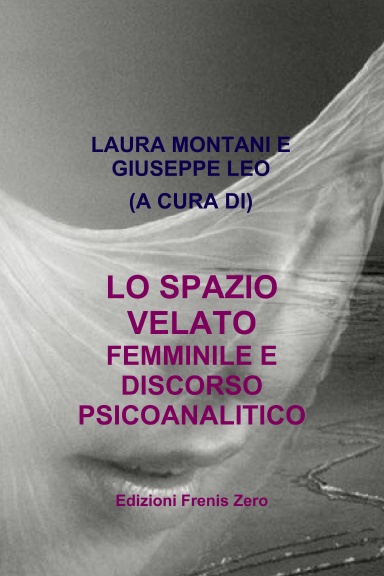
Writings by: A. Cusin, J. Kristeva, A. Loncan, S.
Marino, B. Massimilla, L. Montani, A. Nunziante Cesaro, S. Parrello, M.
Sommantico, G. Stanziano, L. Tarantini, A. Zurolo.
Editore/Publisher: Edizioni Frenis
Zero
Collana: Confini della psicoanalisi
Anno/Year: 2012
Pagine/Pages: 382
ISBN: 978-88-903710-6-6
Click
here to order the book
AA.VV., Psychoanalysis and its Borders, a cura di G. Leo (Editor)
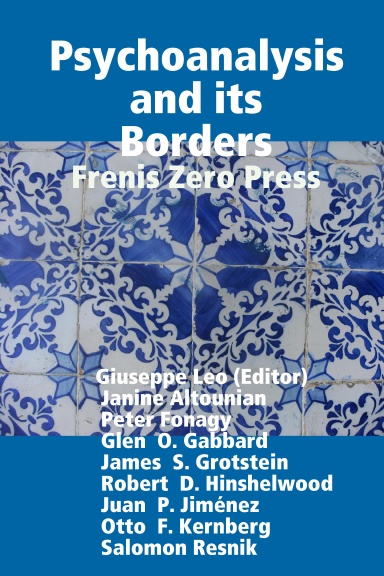
Writings by: J.
Altounian, P. Fonagy, G.O. Gabbard, J.S. Grotstein, R.D. Hinshelwood,
J.P. Jimenez, O.F. Kernberg, S. Resnik.
Editore/Publisher: Edizioni Frenis
Zero
Collana/Collection: Borders of
Psychoanalysis
Anno/Year: 2012
Pagine/Pages: 348
ISBN: 978-88-974790-2-4
Click
here to order the book
AA.VV.,
"Psicoanalisi e luoghi della negazione", a cura di A. Cusin e G. Leo
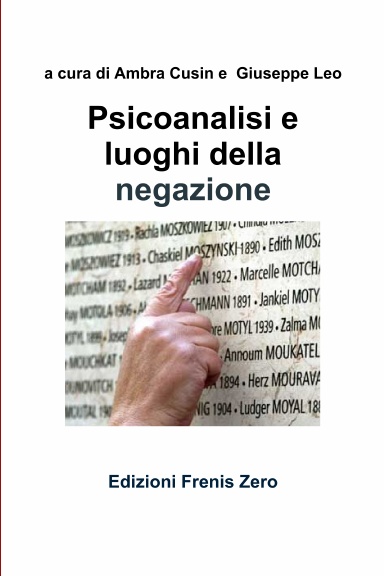
Writings by:J.
Altounian, S. Amati Sas, M. e M. Avakian, W. A.
Cusin, N. Janigro, G. Leo, B. E. Litowitz, S. Resnik, A.
Sabatini Scalmati, G. Schneider, M. Šebek,
F. Sironi, L. Tarantini.
Editore/Publisher: Edizioni Frenis
Zero
Collana/Collection: Id-entità
mediterranee
Anno/Year: 2011
Pagine/Pages: 400
ISBN: 978-88-903710-4-2
Click
here to order the book
"The
Voyage Out" by Virginia Woolf
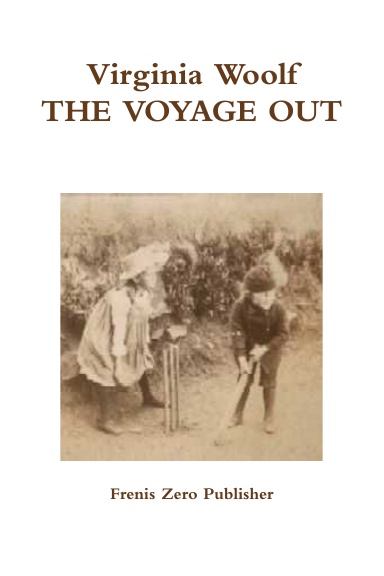
Editore/Publisher: Edizioni Frenis
Zero
ISBN: 978-88-97479-01-7
Anno/Year: 2011
Pages: 672
Click
here to order the book
"Psicologia
dell'antisemitismo" di Imre Hermann
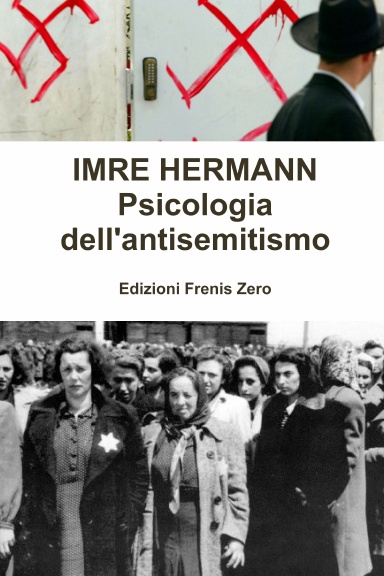
Author:Imre Hermann
Editore/Publisher: Edizioni Frenis
Zero
ISBN: 978-88-903710-3-5
Anno/Year: 2011
Pages: 158
Click
here to order the book
"Vite
soffiate. I vinti della psicoanalisi" di
Giuseppe Leo
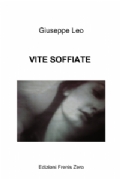
Editore/Publisher: Edizioni Frenis
Zero
Edizione: 2a
ISBN: 978-88-903710-5-9
Anno/Year: 2011
Click
here to order the book
"La Psicoanalisi
e i suoi confini" edited by Giuseppe Leo
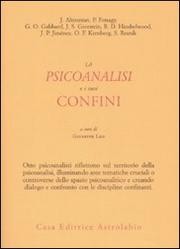
Writings by: J. Altounian, P. Fonagy, G.O. Gabbard, J.S. Grotstein,
R.D. Hinshelwood, J.P. Jiménez, O.F. Kernberg, S. Resnik
Editore/Publisher: Astrolabio
Ubaldini
ISBN: 978-88-340155-7-5
Anno/Year: 2009
Pages: 224
Prezzo/Price: € 20,00
"La
Psicoanalisi. Intrecci Paesaggi Confini"
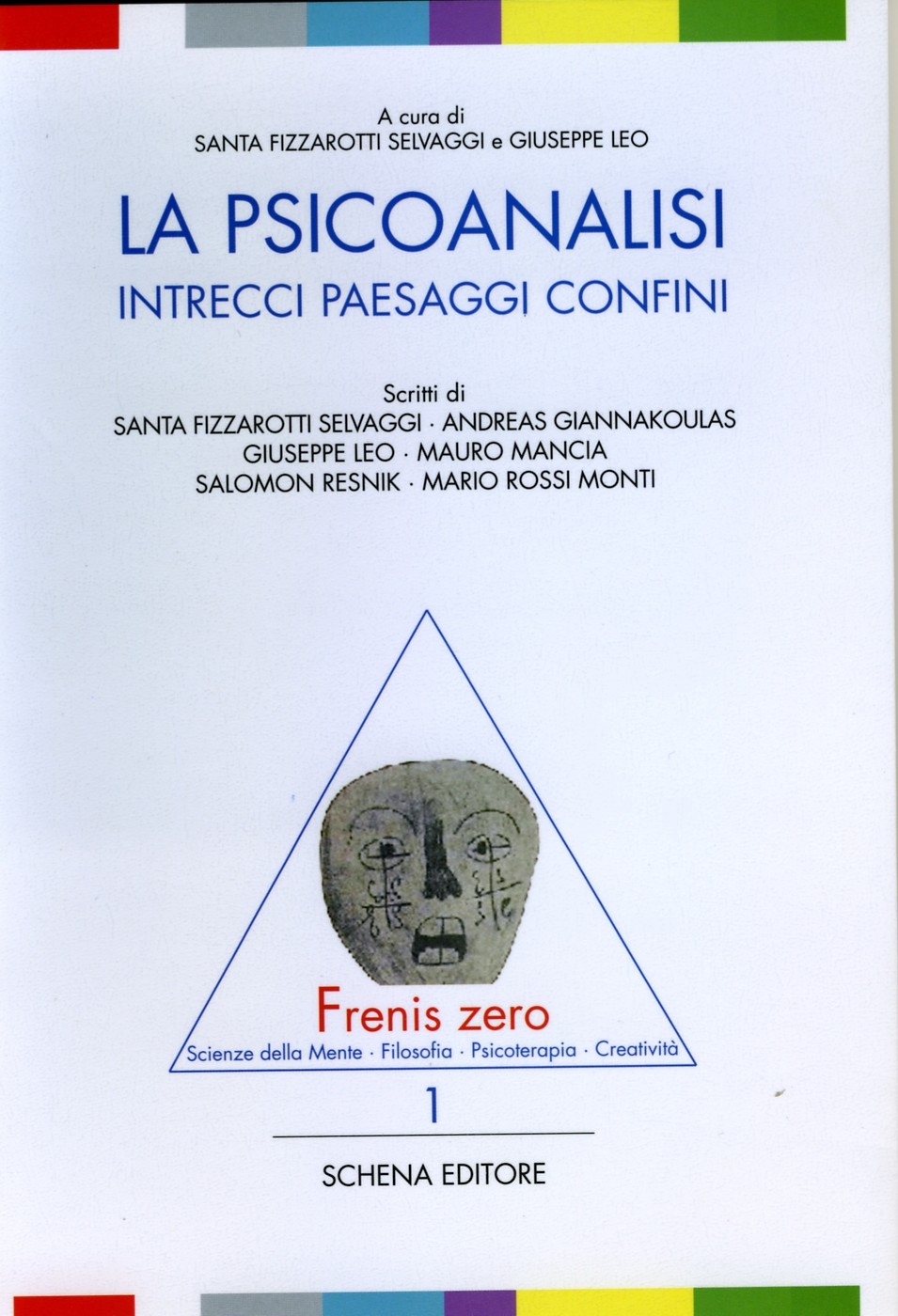
Edited by S. Fizzarotti Selvaggi, G.Leo.
Writings by: Salomon Resnik, Mauro Mancia,
Andreas Giannakoulas, Mario Rossi Monti, Santa Fizzarotti Selvaggi,
Giuseppe Leo.
Publisher: Schena Editore
ISBN 88-8229-567-2
Price: € 15,00
Click
here to order the book
|
|
Introduction
In this article, I use the theory of Donald Winnicott to examine
how satisfaction and the relative richness of life are heavily predicated
upon the balance between discontinuity and continuity, upon the
dialectic between multiplicity and integrity in the experience of self.
With reference to the contributions of contemporary object relations
theorists, I will briefly review Donald Winnicott’s concepts of
transitional phenomena, potential space, true/ false self, and his views
on creativity.
Sigmund Freud’s structural model, introduced in 1923 portrayed
the relation between the ego and the superego as the primordial
blueprint, where much current psychoanalytic theorizing derives from.
In order to underscore the connection with later developments, I will
make cursory references to the structural model. The paradigm shift
from structuralist to poststructuralist psychoanalytic views of the self
came about when theorists started to conceptualize the id differently,
as structured and not formless, as directed and not explosive. By
way of consequence, the repressed began to be conceptualized not as
impulsive, disorganized splinters, but as clusters of meaning organized
around relationships. Thus, the id was envisioned as presupposing a
sense of self, a way of being, thus resembling more the way Freud
portrayed the ego and superego.
Jacques Lacan, Melanie Klein,1
Hans Loewald, Ronald Fairbairn,
Otto Kernberg portray, all in their own language and in their own
ways the id as a person in intense relationships to other persons.
The Freudian structural model has been vastly replaced (sometimes
not terminologically, only conceptually) by relational models.
Freud relegated conflict to the contentious relationship between the
impulses of the id, the regulatory functions of the ego, and the moral
prohibitions of the superego. Contemporary psychoanalytic schools
(frequently referred to as object relations theories), often locate the
hinges of the mind at the intersection of disparate versions of self, as
Stephen Mitchell demonstrates throughout his book Hope and Dread.
With relational psychoanalysts, he holds, “conflict is envisioned as the
clash between contrasting and often incompatible self-organizations
and self-other relationships.”2
The model of self advanced by
object relations theories, with
an emphasis on discontinuity and multiplicity presents experiences
of self as unavoidably lodged within particular relational contexts.
“Because we learn to become a person through interactions with
different others and through different kinds of interactions with the
same other, our experience of self is discontinuous, composed of
different configurations, different selves with different others”
(idem).
The terms pivotal to Winnicott’s thought epitomize his psychoanalytic
aesthetics. The best-known concept, that of transitional objects,
(theorised in 1953) references ubiquitous first possessions of young
subjects – a doll, a teddy bear or a blanket – belonging at once to
them and to the outside world. Transitional objects, which act as
intermediaries between fantasy and reality foreshadow creative
works, which similarly partake simultaneously of reality and illusion.
In The Location of Cultural Experience (1967), Winnicott termed
the space between utter subjectivity and utter objectivity, where
aesthetic experience and play can occur, potential space. Although he
always speaks of potential space in the singular, since it constitutes
a conceptual rather than an empirical realm, Peter Rudnytsky
deliberately employs – as he himself declares in the introduction to
his
book Transitional Objects and Potential Spaces3 – the plural form to
evoke the uniqueness of every relationship between two human beings
or between a work of art and its critics. (Introduction xii) The last
of
Winnicott’s concepts (advanced not earlier than 1969) is the use of
an object. By “use”, he means the discharge of destructive impulses,
hence a person (or an object) must be able to survive destructive
attacks if it is to be placed in the sphere of external reality. This
difficult idea attests to the abiding influence on Winnicott’s thinking
of
Melanie Klein, to whose party in the British Psychoanalytical Society
he belonged before joining what became known as the Middle Group. It
could be said that Winnicott’s entire opus revolves around a
central issue: the relationship between illusion and reality, between
the self and the outside world. For Winnicott, the key process is the
establishment of a sense of the self experienced as real. The perfect
accommodation to the subject’s wish creates what Winnicott terms
the “moment of illusion.” In the earliest months of life, Winnicott’s
so-called “good enough mother” is invisible, and it is precisely her
invisibility which allows the infant the crucial megalomaniacal,
solipsistic experience which Winnicott characterizes as the state
of “subjective omnipotence.” In his view, a relatively prolonged
experience of subjective omnipotence is the foundation upon which
a healthy self develops. Winnicott’s vision of health (easily equatable
with the capacity for play), implies freedom to alternate between “the
harsh light of objective reality to the soothing ambiguities of lofty
self-absorption and grandeur in subjective omnipotence.”4 Actually,
Winnicott considers the reimmersion into subjective omnipotence as
the condition of possibility for creativity, enabling the development
of one’s illusions to the fullest, in utter disregard for external
reality.
Psychoanalysis seems to have always been captivated by
the arcana of the creative process. In “Creative writers and
daydreaming,”5 Sigmund Freud wonders “[f]rom what sources does that
strange being [the creative writer] draw his material?” (143), going
on to suggest that children at play display the same behaviour as a
writer, inasmuch as they create a world of their own. Nevertheless,
farther into this essay, he states, quite surprisingly: “as people grow
up they cease to play”, and realise that they are expected “not to go
on playing or phantasizing any longer” (145, 147). Psychoanalytic
exploration into the creative processes continued with Winnicott’s
more confident vision of play, creativity, and fantasy. Winnicott
started
his exploration into this area of human experience by postulating what
he termed “primary creativity”: a mother not immediately complying
with baby’s wants or being absent, which entails bafflement and pain,
followed by fearfulness and anger.
As Winnicott proposed, this is precisely when “infants get a first
inkling of the knowledge that they and the maternal source of life are
not one and indivisible.”6 Joyce McDougall understands this to be
the early origin of becoming an “individual” in Winnicott’s theory
– someone “who can no longer be divided into two fused parts of
himself and the Other” (idem). The forlorn melding with the maternal
universe is recreated, in hallucinatory fashion, by the infant, on its
way to individuation. This is designated by Winnicott as the “infant’s
earliest creative activity.” Consequently, creation “has always an
aura of hallucination and illusion to fill what might otherwise be
a frightening void” (ibidem). The phenomenon that Winnicott
conceptualised and called the “transitional space” (1971) implies
the participation from both the outer and the inner world. He draws
attention to the fact that this potential space “widens out into that
of
play, of artistic creativity and appreciation.”7 Accordingly, among
the various elements that favour creativity, the creator (regardless of
the creative field) could be deemed to be also playing. McDougall
holds that, for all their dissimilarities, this is where Winnicott
shares a
similar vision to Freud’s.
Winnicott’s transitional objects
According to Winnicott, creative activity originates in an imaginary
potential space that is found between the person’s inner reality and
the real world. Early in life, if needs are met, the subject is seldom
compelled to recognize the reality of others, the separation of inner
from outer, or the distinction between fantasy and reality. The child
subject then develops psychological structures that will help bear
frustration and maintain the sense of continuity, their function being
only a symbolic one, as Michael Craig Miller holds in his Winnicott
Unbound (446).8 Melanie Klein had also described the child’s process
of symbolization in its fantasies, whereby part-objects and a source of
anxiety are transformed into, and hence symbolized by, new objects
which themselves become a source of anxiety and must then be
symbolized. The concept of anxiety is clearly needed in considering
the dynamics of the process. Melanie Klein strongly emphasized that the
loss of the original object, together with the dread of it, is what
prompts the search for a substitute.
The process continues, creating a constant need for new external
objects to act as such symbols: “Thus, not only does symbolism come
to be the foundation of all phantasy and sublimation but, more than
that, upon it is built up the subject’s relation to the outside world
and
to reality in general” (The Selected MK 238).
Winnicott uses the terms “transitional objects” and “transitional
phenomena” to designate “the intermediate area of experience,
between the thumb and the teddy bear, between primary creative
activity and projection of what has already been introjected” (2). It
is the time when the child begins to take an external object, a piece
of a blanket or cloth, for example, to hold as a replacement for the
mother’s body. Winnicott’s next point about transitional phenomena
is significant:
Its fate is to be gradually allowed to be decathected, so that in
the course of years it becomes not so much forgotten as relegated
to limbo. It loses meaning, and this is because the transitional
phenomena have become diffused, have become spread out over the
whole intermediate territory between “inner psychic reality” and “the
external world as perceived by two persons in common,” that is to say,
over the whole cultural field.7
Ira Konisberg, discussing transitional phenomena, claims that
there is always a strain in our relating inner and outer reality, but
it
is this intermediate area that gives relief from this strain.9 The term
transitional object, disambiguated for rookies in psychoanalysis by
Stephen Mitchell and Margaret Black in Freud and Beyond,
10 does
not imply the transition from dependence to independence, but “the
transition between two different modes of organising experience,
two different patterns of positioning the self in relation to others”
(128). The teddy bear is not a mere substitute for the mother, instead
it becomes a unique appendage to the child’s self. Paradoxically
ambiguous, the transitional object “cushions the fall from a world
where the desires omnipotently actualise their objects to one where
desires require accommodation to and collaboration of others to be
fulfilled” (idem).
Transitional objects and phenomena, as described by Winnicott,
are thought to be the first “not me” possession. To the extent that
the transitional object is an initial other-than-me, it is so “without
any sharp sense of exteriority.”11 It is, Michael Eigen hypothesises,
otherness in the process of being born, an incipient other. This
otherness testifies to the fact that a primary creative process lies at
the origin of symbolic experience and is thus “a vehicle for creative
experiencing. As neither wholly self nor other, nor wholly outside
these terms, it is itself symbolizing experiencing emerging as such”
(416). In Abbott Bronstein’s interpretation, the transitional phase is
conceived as a “normative and desired step toward more complete
psychological development in both emotional and cognitive spheres”,
because the “object” is often characterized by its touch, smell,
texture,
and durability.12 The child uses the object for comfort and imbues it
with special value, particularly when there is an increase in anxiety,
like in times of transition. Thus, the subject fends off, according to
Winnicott, the unbearable anxieties of annihilation and disintegration
that accompany the separation anxieties.
Winnicott stressed that the articles used as transitional objects
are “selected” or “created” to aid particularly in the containment
and modulation of annihilation and separation anxieties, with the
underlying purpose of preserving a sense of healthy self.
Human space/ Maternal space
Pervasive in Donald Winnicott’s theoretical scaffolding is the fact
that human space begins to take shape in the early relationship with
the mother. The object most closely associated with the mother is the
“vessel”. Its psychoanalytic counterpart is the “container”, which
will form an important theoretical term in Wilfred Bion’s thinking.
Bion thinks of the container as “the mother’s reverie, processing and
containing the infant’s chaotic feelings, especially hatred.”13
That the concept ‘container’ means essentially ‘container of
meaning’ makes a link to Melanie Klein’s concept of spaces, in a
way that enriches the concreteness which Donald Meltzer considered
to have been her greatest contribution to the model of the mind, the
concreteness of psychic reality.14 Not only are internal objects concrete
in their existence as structures of the mind, but this concreteness is
necessary in order for them to be able to function as containers of
meaning.
There are various ways to conceive the vessel’s function. We can
view it positively as “containing” something, for instance, fragmentary
experience. The word “contain” also suggests a barrier “against the
centripetal force of overflow and bits flying apart”, in Teresa Hooke
and Salman Akhtar’s terms.15 It thus allows an unstable mass to
somehow hold together. But we can also view the vessel, along the
lines of the authors mentioned above, negatively as preserving the
emptiness within it. In other words, it is precisely the empty space
inside that is preserved from impingements from without. Indeed, we
could take the step of saying that the vessel is this emptiness – the
essence of its container function.
In The Geography of Meanings, Hooke and Akhtar reach the
conclusion that human psychic space is not static, but has an inherent
sense of movement and energy. This dynamic quality suggests the
element of time, which is considered to be “the repressed dimension
of space”: “There is always a hidden reference to time in human/
psychic space (the clock on the wall?)”
Winnicott’s potential space
A widely entertained psychoanalytic belief of Winnicott’s time,
which he accepted, was that in the beginning, “the infant is the
environment and the environment is the infant.”7 There was no outer
or inner reality in that state, since the infant was believed to be yet
unable to make such differentiations. There was no experience and
perception of separation from the mother, no recognition of external
objects, during the primary narcissistic phase of development.
Winnicott formulates his very original concept of space – the
intermediate or potential space concept, in part, as an alternative
to Melanie Klein’s internal world.16 “It was already becoming
fashionable to speak of the child’s internal or representational world
as constituting the area of the psyche – the stage where conflicts and
antagonisms played themselves out.”15 What then is potential space?
Ogden reviews this concept in clear detail in The Matrix of the Mind.
Parallel to the transition from concrete to abstract symbols, there is
a
transition from the unity of mother-infant to the separation of mother
and infant. In that transition, a potential space is required, a
potential
space which is a “state of mind that embodies the paradox that is never
challenged: the infant and mother are one, and the infant and mother
are two.”17
Winnicott called this area between objectivity and subjectivity
a potential space, meaning that we can freely engage in interplay
with the external world of persons and objects. Potential space, the
transitional area between last stops on the line of relatedness “is an
area,” Winnicott says, “that is not challenged, because no claim is
made on its behalf except that it shall exist as a resting-place for
the
individual engaged in the perpetual human task of keeping inner
and outer reality separate yet interrelated.”18 In Peter Rudnytsky’s
interpretation, “in this area we relate to the world of other people
and objects by using symbols,” what Winnicott calls “transitional
objects,” “that mix and distinguish inner and outer realities.”3
Potential space came to depict an “area that exists between the
subject and the object during the phase of the repudiation of the
object as not-me, that is, at the end of being merged with the object”
(CP 107). Space is quasi-interchangeable with location, therefore
Winnicott deemed it in need of further clarification:
Potential space is not inside by any use of the word. Nor is
it outside, that is to say, it is not part of the repudiated world, the
not-me, that which the individual has decided to recognize as truly
external.19 Prone to paradox, Winnicott sought out a solution to this
obvious dilemma by designating this space as “an intermediate area
of experiencing that lies between the inner psychic world and external
reality” (PR 3).
Potential space, for Winnicott, included creation as well as
aggression. In this intermediate area, the subject omnipotently
“creates the object, but the object was there to be created” (CP 89).
The subject fabricates and destroys, by way of illusory omnipotence,
the external object. The latter is part of external reality, despite
the
subject’s omnipotent destructions and creations, and it resists
absolute
omnipotence, like any object. This intermediate area of experience is
a place where objects are destroyed and then resurrected, created and
found, an area where the confines between the made and the given
are fluid. The object created in this intermediate area of experience
is
a not-me and a me-object object, at that same time, which Winnicott
termed a subjective object. In Ryan LaMothe’s understanding, the
transitional object is often interchangeable with the subjective
object,
and, like the potential space, it signifies both union with and
separation
from the object.20 Ideally, the transitional object can be considered
to
revive the experiences of comfort, satisfaction and validation.
Summarizing at this point, this intermediate area of experiencing
called potential space points to a particular phase of transition
between omnipotence and handing it over to “an external reality or
God principle”, between acceptance/ use of and merger with external
reality, between belief in, familiarity with omnipotence (which is,
actually, a definition of primary creativity) and “object perception
based on reality-testing”, between merger and shared reality, between
the object objectively perceived and subjective construction of the
object.7
Departing from his observations, Winnicott made the connection
with the capacity to dream, advancing that an absence of a
“transitional
space” (implying the inability to differentiate between the non-self
and the self) also suppresses the ability to create dreams. This
research
eventually steered him to discover that every child experiences the
vital need to have a “transitional object” (sometimes a little piece of
the
mother’s clothing or a teddy bear). The transitional object represents
the essence of protection and care, but is also an imaginative creation
of the child itself.
I would now like to make a brief excursus into the way trauma is
lodged within the Winnicottian psychoanalytical structures. Trauma
constitutes “the collapse of the dialectical tension between generating
and surrendering to experience.”20
In the moment of trauma, LaMothe believes, “the victimizer
actively and omnipotently generates experience such that the victim
is forced to submit to the reality of the victimizer, and in so doing, the
victim’s subjectivity is negated.”20 The victimizer wishes to absolutely
deny difference, sees the victim as an absolute other. Likeness is
rebuffed, with the victimizer likewise attempting to compel the victim
into a recognition of his/her totalitarian and constructed reality. Jessica
Benjamin reinforces this view on violence, which she construes as the
outer perimeter of the less dramatic tendency of the subject to force
the other to either be or want what it wants, to assimilate the other to
itself or make it a threat. It is the extension of reducing difference to
sameness, the inability to recognize the other without dissolving his/
her otherness.21
The interrelated, dialectical pairs of potential space, “loosened
from the focus on the vicissitudes of reality and illusion, represent
attributes of complex relational interactions.” Severe trauma,
according to LaMothe, represents the succumbing to the other’s
constructed representations, the utter disintegration of potential space.
This implies the lack of acknowledgement of one’s affirmations and
the simultaneous repudiation of one’s needs and desires, together with
shattering experiences of hopelessness, betrayal and distrust, which
accompany associated hopelessness of repair and chaotic disruption.
Trauma “simplifies,” by annihilating the paradox, the richness,
complexity, and dialectical tension of potential space in human life.
True/ False self
Winnicott’s probing into the transitional space steered him to the
notion of a “true self”, that dimension within an individual, which
enables him/her to feel in close contact with his/her own and someone
else’s reality, alive, renewed. He also insisted on what he called
“unintegration”, meaning the capacity of an individual to drift or float,
without fear, into nothingness and formlessness, to have “time to be”,
with an emphasis on being. Winnicott emphasized his differentiation
from gestalt psychology in a letter to a gestalt colleague: “gestalt
psychology (seems to me) to be taking the pattern-making as a
primary state, whereas for the psychoanalyst, the pattern-making is a
secondary phenomenon related to primary unintegration”.20
Within psychoanalysis, Stephen Mitchell, Arnold Modell, and
Roy Schafer are among those who have comprehensively fleshed
out the notion of the narrative construction of the self. Schafer, for
example understands the experiential self “as a set of varied narratives
that seem to be told by and about a cast of varied selves. And yet,
like the dream, which has one dreamer, the entire tale is told by one
narrator.”22 Elsewhere, he also states that “the so-called self may be
considered to be a set of narrative strategies or storylines each person
follows in trying to develop an emotionally coherent account of his/
her life among people.”22
From a philosophical standpoint on the self as narrative, Alasdair
MacIntyre advanced, in After Virtue,
23 the concept of narrativity as
the form through which we make sense of the actions of others and,
ultimately, of our lives Beatriz Priel also contends, in Bakhtin and
Winnicott,
24 that the true and false selves, “being distinct dialogical and
temporal configurations, can be seen as different narrative forms of the
self – that is, as two genres of the self”.24 True self processes seem to
Priel to suggest novelistic narratives of the self which are multivocal,
dialogical, open to creative meaning and change. Conversely, the false
self configures a unitary, monological, reasonably stable delineation
of the meaning imposed by the other.25
Conclusion
Winnicott proposed an optimistic view of fantasy, play, and
creativity. He began his research in this area of human experience
with the postulate of what he called “primary creativity”: when a
mother is absent or does not immediately comply with what her baby
wants, there is pain and puzzlement, then anger and fear. Winnicott’s
transitional phase is conceived as a “normative and desired step
toward more complete psychological development in both emotional
and cognitive spheres”. The child imbues the object with special value
and uses it for comfort, particularly at times of transition in which
there is an increase in anxiety. According to Winnicott, the subject
thus keeps at bay the dread-filled dimension of experience that Harry
Sullivan (1981) termed the ‘not me’, the unthinkable anxieties of
annihilation and disintegration that precede the separation anxieties.
To a very large extent, satisfaction and the relative richness of life
are heavily predicated upon the balance between discontinuity and
continuity, upon the dialectic between multiplicity and integrity in the
experience of self. Where there is too much discontinuity, there is a
dread of dislocation, splitting, fragmentation, or dissolution.
REFERENCES
1. Klein Melanie. The Selected Melanie Klein (edited by Juliet Mitchell),
New York: The Free Press; 1986.
2. Mitchell Stephen. Hope and Dread in Psychoanalysis. Basic Books.
1993.
3. Rudnytsky Peter L. Transitional Objects and Potential Spaces: Literary
Uses of D.W. Winnicott, New York: Columbia University Press; 1993.
4. Eigen Michael. The Wings of Icarus – Illusion and the Problem of
Narcissism. Contemporary Psychoanalysis. 1986;22.
5. Freud Sigmund. “Creative writers and day-dreaming.”
6. McDougall Joyce. Violence and Creativity. Scandinavian Psychoanalytic
Review. 1999;22:207–217.
7. Winnicott Donald. Collected Papers: Through Paediatrics to
Psychoanalysis. 2nd ed. London: Tavistock; 1988.
8. Craig Miller Michael. Winnicott Unbound: The Fiction of Philip Roth
and the Sharing of Potential Space”, in International Review of PsychoAnalysis. 1992;19.
9. Konigsberg Ira. Transitional Phenomena, Transitional Space: Creativity
and Spectatorship in Film. Psychoanalytic Review. 1996;83.
10. Mitchell Stephen, Black Margaret. Freud and Beyond – A History of
Modern Psychoanalytic Thought. Basic Books. 1995.
11. Eigen Michael. The Area of Faith in Winnicott, Lacan and Bion.
International Journal of Psycho-Analysis. 1981.
12. Bronstein Abbot. The Fetish, Transitional Objects, and Illusion.
Psychoanalytic Review. 1992;79.
13. Bion Wilfred. Second Thoughts: Selected Papers on Psychoanalysis,
Indianapolis: Karnac Books; 1984.
14. Meltzer Donald. The Kleinian Development, London: Karnac Books;
1998
15. Akhtar Salman, Savio Hooke, Maria Teresa. The Geography of
Meanings - Psychoanalytic Perspectives on Place, Space, Land and
Dislocation, London: International Psychoanalytical Association, (The
International Psychoanalytical Library). 2007.
16. Segal Hanna. Yesterday, Today and Tomorrow, London and New York:
Routledge; 2007.
17. Ogden Thomas. The Matrix of the Mind: Object relations and the
psychoanalytic dialogue, Northvale, NJ: Jason Aronson; 1986.
18. Winnicott Donald. Playing and Reality. 2nd ed. London: Tavistock; 1981.
19. LaMothe Ryan. Creating Space: The Fourfold Dynamics of Potential
Space. Psychoanalytic Psychology. 2005;22.
20. Benjamin Jessica. Shadow of the other, London: Routledge; 1998.
21. McDougall Joyce. Of Sleep and Dream: A Psychoanalytic Essay.
International Forum of Psychoanalysis. 1993;2.
22. Schafer Roy. Retelling a Life: Narration and Dialogue in Psychoanalysis,
New York: Basic Books; 1993.
23. MacIntyre Alasdair. After Virtue. London: Duckworth; 1981.
24. Priel Beatriz. Bakhtin and Winnicott: On Dialogue, Self, and Cure.
Psychoanalytic Dialogues. 1999;9.
25. Winnicott Donald. Fear of Breakdown. International Relational
Psychoanalysis. 1984;1:103–107.
XXXXXX
XXXXXXXXXXXXXXXXXXX
XXXXXXXXXXXXXXXXXXX
XXXXXXXXXXXXXXXXXXX
XXXXXXXXXXXXXXXXXXX
XXXXXXXXXXXXXXXXXXX
XXXXXXXXXXXXXXXXXXX
XXXXXXXXXXXXXXXXXXX
XXXXXXXXXXXXXXXXXXX
XXXXXXXXXXXXXXXXXXX
XXXXXXXXXXXXXXXXXXX
XXXXXXXXXXXXXXXXXXX
XXXXXXXXXXXXXXXXXXX
XXXXXXXXXXXXXXXXXXX
XXXXXXXXXXXXXXXXXXX
XXXXXXXXXXXXXXXXXXX
XXXXXXXXXXXXXXXXXXX
XXXXXXXXXXXXXXXXXXX
XXXXXXXXXXXXXXXXXXX
XXXXXXXXXXXXXXXXXXX
XXXXXXXXXXXXXXXXXXX
XXXXXXXXXXXXXXXXXXX
XXXXXXXXXXXXXXXXXXX
XXXXXXXXXXXXXXXXXXX
XXXXXXXXXXXXXXXXXXX
XXXXXXXXXXXXXXXXXXX
XXXXXXXXXXXXXXXXXXX
XXXXXXXXXXXXXXXXXXX
XXXXXXXXXXXXXXXXXXX
XXXXXXXXXXXXXXXXXXX
XXXXXXXXXXXXXXXXXXX
XXXXXXXXXXXXXXXXXXX
XXXXXXXXXXXXXXXXXXX
XXXXXXXXXXXXXXXXXXX
XXXXXXXXXXXXXXXXXXX
|
|
|
|
|
|
|
|
|
|
|
|
|
|
|
|
|
|
|
|
|
|
|
|
|
|
